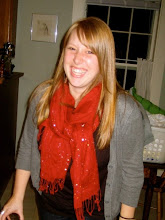Written on April 8th, 2010
Dedicated to the past and present staff of The Planning Commissioners Journal
[In a recent email it was brought to my attention that I haven't really described the village of Kerr Jarga Jobe (KJJ) yet for all of you. So here comes my attempt to paint you a picture of a small Gambian village.]
KJJ is a small-ish village of between 60-65 compounds. Compounds can have anywhere from 5 to 35 residents and their respective houses. Houses are usually either square one room grass roof huts, like mine, or row houses with multiple doors that lead into 1 or 2 rooms with separate or communal backyards. Inside the house is used mainly for sleeping resting and seeking shade/temperature relief while doing work like shelling peanuts. I would say that 80-90% of socializing and 95% of work takes place outside. The backyard serves as bathroom, bathing area, kitchen and laundry room. The front or communal space in the center of the compound is used for socializing, working, eating, resting, fires for light and/or warmth, attaya brewing and sleeping under the stars.
My living situation, i.e. the fact that I have a house and backyard of my own is not the norm--usually only the head of the compound has this luxury. For everyone else their days, nights and even beds are shared with their mothers, children, brothers and sisters etc. It becomes easy to understand why American notions of privacy and personal space are not really understood here.
Now imagine yourself standing on Gambia's North Bank highway (a two lane road), your coming from the west and on your left about 1/4 of a kilometer off the road beyond the spindly trees and dry grass you will see the beginning of KJJ. The village center with the grand mosque is probably 1/2 to 3/4 km from the NB road but with time and growth the village has moved from the center out towards the main road. My compound is on the outskirts of town and my compound as well as those around ours represent the most recent settlement in town. There are already compounds being built beyond mine closer to the main road so eventually the village will probably start at the NB road rather than 1/4 km off of it. I suspect because the village has slowly expanded towards the road village resources--water taps, communal sitting spaces under large trees and bitiks (small variety stores essential to Gambian life) are spread out to all corners/sections of the village.
About 100 meters from my compound is the KJJ cooperative which is basically a huge parking lot with a high concrete wall around it where all of the peanuts grown by this and surrounding villages are stored until they are bought en masse by the government. Next to the cooperative is the tap my family uses and next to the tap is the village market under a big tree where every day about six women sell ingredients and vegetables to make lunch. On the left of the cooperative is the "main road" which runs from the NB road all the way into the center of town. On this road is the skills center, small mosque, small school, milling machine, my favorite bitik, the big tree where the guys who sell fish come in the morning, the district chiefs compound (with electricity) and finally the road ends in the town center.
The town center is only notable because of the large mosque with a domed robins egg blue roof which faces a large covered bantaba (a bench on steroids). Now that I think about it the "village center" is historically where the village started. The alkali's (village leader) compound is on the opposite end of the "square," but for all practical purposes it represents the norther edge of the village. Beyond the "square" and mosque the village gives way to an open savanna dotted with baobabs and one dirt path/road leading to our neighboring village, Torro Alhasan.
Aside from the hug bantaba in the center of town, the water taps and to a certain degree the skills center there are not any other public spaces in town. But at the same time even private space is public. To get most places you walk through peoples "private" compounds. The blurring/lack of distinction between public and private space is also assisted by the fact that basically everyone in the village is related in one way or another. The two most common family names are Jobe (as in KJJ--the family that founded the village) and Cham. Here, as it is everywhere else in the country, people don't move somewhere unless someone they know and are related to already lives there. My family is a fairly new addition to the village hence why we life on the edge of town, but my host father moved here because his sister is one of the district chiefs wives. This coupled with the fact that most marriages are arranged means that people move between compounds through marriage. Many who live in the village were also born here and the women who have left have left because they were married to people in other villages. Since my village is fairly close to the city there are a fair amount of people who move back and forth but this is mostly men seeking work and kids whose families send them to live with relatives in Kombo to go to school.
So there's a snapshot of KJJ, I hope I did The Planning Commissioners Journal justice! If you're dying to know more come visit!!
Subscribe to:
Post Comments (Atom)

Excellent report! Thanks so much for taking the time to write that up. When you next have the chance can you upload some photos to go with some of those landmarks, especially the bantaba and one or two of the compounds -- unless that's something that the villagers wouldn't welcome. Best wishes, Wayne
ReplyDelete